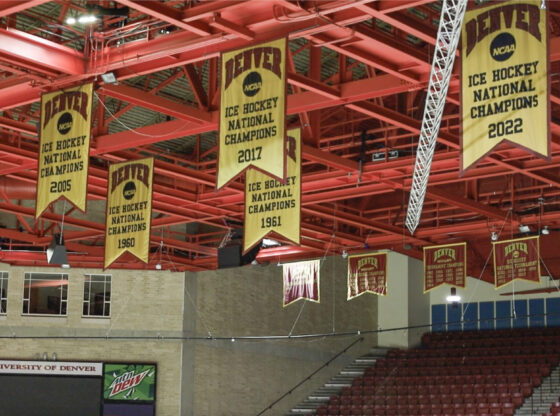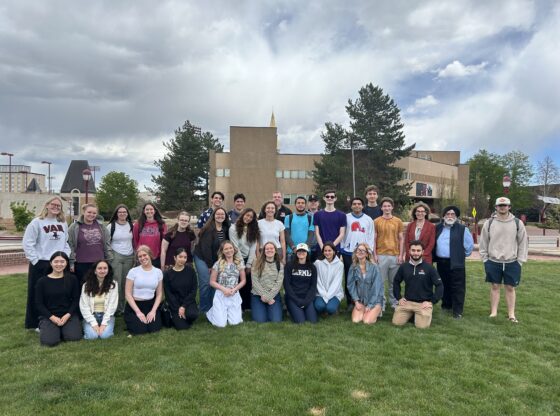WASHINGTON–Ramzi Binalshibh, who allegedly helped plan and coordinate the Sept. 11 attacks on New York and the Pentagon, has been captured and is in U.S. custody after surviving a fierce firefight in Karachi with Pakistani police on the anniversary of the terror strikes, intelligence and law enforcement sources said Friday.
The arrest marks the end of a yearlong manhunt for a suspect believed to be one of the few living conspirators in the Sept. 11 plot. It signifies an important victory in the difficult campaign to apprehend key operatives in Osama bin Laden’s al-Qaida terrorist network.
Even as Americans commemorated the anniversary of the attacks, Binalshibh was arrested by Pakistani police on Wednesday with as many as 10 other suspects, after a three-hour gun-and-grenade battle in which two gunmen were killed. He is being transferred to a U.S. air base in Afghanistan, sources said.
Details of the arrest were unclear Friday night, but one intelligence source said that CIA paramilitary units “were nearby” when the raid was carried out.
Charged in Germany with more than 3,000 counts of murder for his complicity in the attacks, Binalshibh had hoped to be the 20th hijacker in the plot but was repeatedly rebuffed in attempts to secure a U.S. visa, officials have said. His name has also surfaced in investigations of several other terrorist attacks, including the 2000 bombing of the USS Cole in Yemen and a bombing earlier this year of a synagogue in Tunisia.
The Yemeni national roomed with hijacking ringleader Mohamed Atta in Hamburg, and provided crucial financial and logistical support to Atta and other members of the cell who carried out the operation, according to intelligence officials. The U.S. indictment against another alleged Sept. 11 conspirator, Zacarias Moussaoui, names Binalshibh as an “unindicted co-conspirator,” and accused him of wiring money to Moussaoui and at least one of the hijackers, Marwan Al-Shehhi.
In a previously audiotaped interview with the Qatar-based al-Jazeera television station broadcast Thursday, Binalshibh boasted of his role in helping to organize the Sept. 11 plot and called the attacks “real acts of heroism” that succeeded in part because “the enemy is stupid.” Al-Jazeera said it conducted the interview with Binalshibh and Khalid Sheik Mohammed, believed to be a top coordinator of the Sept. 11 attack, in a secret location in Karachi.
“He is a very big fish to catch,” said Vincent Cannistraro, a former CIA counterterrorism official. “He certainly was the coordinator with Khalid of the 9/11 operation itself, and he might know some of the people who may still be in the United States if we can get him to talk.”
Pakistani officials were waiting to hear a final word from an American who, a Pakistani intelligence official said, suspected that one of the arrested persons resembles Mohammed, another al-Qaida member wanted in the Sept. 11 attack.
U.S. sources said Mohammed, one of the FBI’s “Most Wanted Terrorists,” was not captured as part of the Karachi raid. Only one other suspected terrorist known to be in U.S. custody, al-Qaida lieutenant Abu Zubaida, surpasses Binalshibh in importance, several officials and observers said.
In a separate development, a federal official Friday night that authorities have issued arrest warrants in Buffalo, N.Y., for five men who are believed to have gone through al-Qaida training camps in Afghanistan. At least some of the men were in custody, the official said.
The men were described as naturalized American citizens, and some or all are of Yemeni descent. They have been living in Lackawanna, a suburb of Buffalo.
A federal official said information from a source who caused officials to raise America’s terror alert index to “code orange”–the second highest–on the eve of the Sept. 11 anniversary, also led to the group of Yemenis in Buffalo.
In Pakistan, several officials said specific information about the al-Qaida hide-out in Karachi had come from “American law enforcement officials in Karachi.”
“Frankly speaking, we didn’t know that he was Ramzi until American officials identified him several hours after his capture,” said a Karachi police official involved in the raid. Another added, “It is our sheer good luck that Ramzi was not killed in the encounter.”
Pakistani President Pervez Musharraf told CNN in an interview that Pakistani intelligence officials learned that the suspects were living in a residential area. “The place was raided, and there was a shoot-out. Two of the al-Qaida members were killed and 10 arrested,” he said. “We suffered about seven injuries on our side. It was a good operation. And there is one Egyptian, one Saudi, and eight Yemenis in this. And I’m told maybe there is an important person also involved.”
In Wednesday’s raid on a low-rise apartment building in Karachi, which began about 9 a.m. local time, two suspects were killed and one police officer was seriously wounded. Suspects hurled grenades and fired assault rifles at police for three hours.
Police seized a satellite phone, a laptop computer, firearms, grenades and other items from the building, according to local press reports.
As Musharraf has heightened efforts to crack down on militants, Pakistani security forces have engaged in more frequent gun battles with suspected terrorist operatives.
Harvey Kushner, a terrorism expert at Long Island University, said the case “shows that there is significant cooperation with intelligence agencies around the world.” But he said he would not expect the arrest to affect the second-generation al-Qaida network, which has dispersed to a number of countries. Officials now fear that lower-level and largely independent operatives are planning attacks on their own.
The terror operatives are “much more spread out now,” Kushner said.
In the al-Jazeera interview, Binalshibh and Mohammed said planning for the Sept. 11 attacks began in 1999.
Binalshibh has been identified by some Western intelligence and law enforcement officials as having attended a terrorist meeting in January 2000 in Kuala Lumpur, Malaysia, in which both the Cole attack and the Sept. 11 plot are believed to have been discussed. However, disagreement persists among intelligence analysts over whether a surveillance photograph identifies him as attendance.
Binalshibh grew up in the eastern Yemeni province of Hadramaut, considered a hotbed of Islamic radicalism. He first entered Hamburg in 1995 with a phony plea for asylum.
Binalshibh also appeared on a videotape containing “martyrdom messages” that were recovered by U.S. forces at the Afghan home of al-Qaida’s slain military leader, Mohammed Atef.
German authorities believe Binalshibh met Atta and other members of the Hamburg cell through the Al Quds mosque in that city. The group was recruited into al-Qaida by a German of Syrian origin, Mohammed Haydar Zammar, and attended terror training camps in Afghanistan, German officials have said.
One member of the group, Moroccan citizen Mounir El Motassedeq, is the only person connected with the attacks in German custody. Arrested in Hamburg two months after the terror strike, he is charged with more than 3,000 counts of being an accessory to murder and membership in a terrorist organization.
According to the Moussoaui indictment, Binalshibh tried four times between May and October 2000 to secure a visa for entry into the United States. U.S. investigators have said that after these attempts failed, Moussaoui was designated as the 20th hijacker, but he was arrested on immigration charges in August, 2001 after he raised suspicions at a Minnesota flight school. Some investigators, howerver, have theorized that Moussaoui, whose laptop computer contained information about cropdusting, may have been part of a second wave of terror attacks or a back-up plan instead.
Binalshibh fled Germany on Sept. 5, 2001, and was believed to have entered Afghanistan through Pakistan later that month.
In the clandestine interview with an al-Jazeera correspondent, Binalshibh praised the 19 hijackers as Islamic martyrs.
“You’re entering a military battle, a nontraditional military battle, against the strongest power on earth and you are confronting them, with their forces and soldiers, with a group of only 19 men,” Binalshibh said, according to an English-language transcript of the interview.
He added later, “The plane shook the World Trade Center so violently in an incredible way. We’re seeing it live on the air and praying to God to make it happen. We treated those who kill our women and innocents with the same. We kill their women and innocent until they stop.”
In the al-Jazeera interview, Binalshibh said Atta called him the morning of the attacks. “He said, `Two sticks, a dash and a cake with a stick down.’ As it turns out, two sticks is the number 11, and a dash is a dash and a cake with a stick down is the number 9. And that was September 11,” Binalshibh said.











